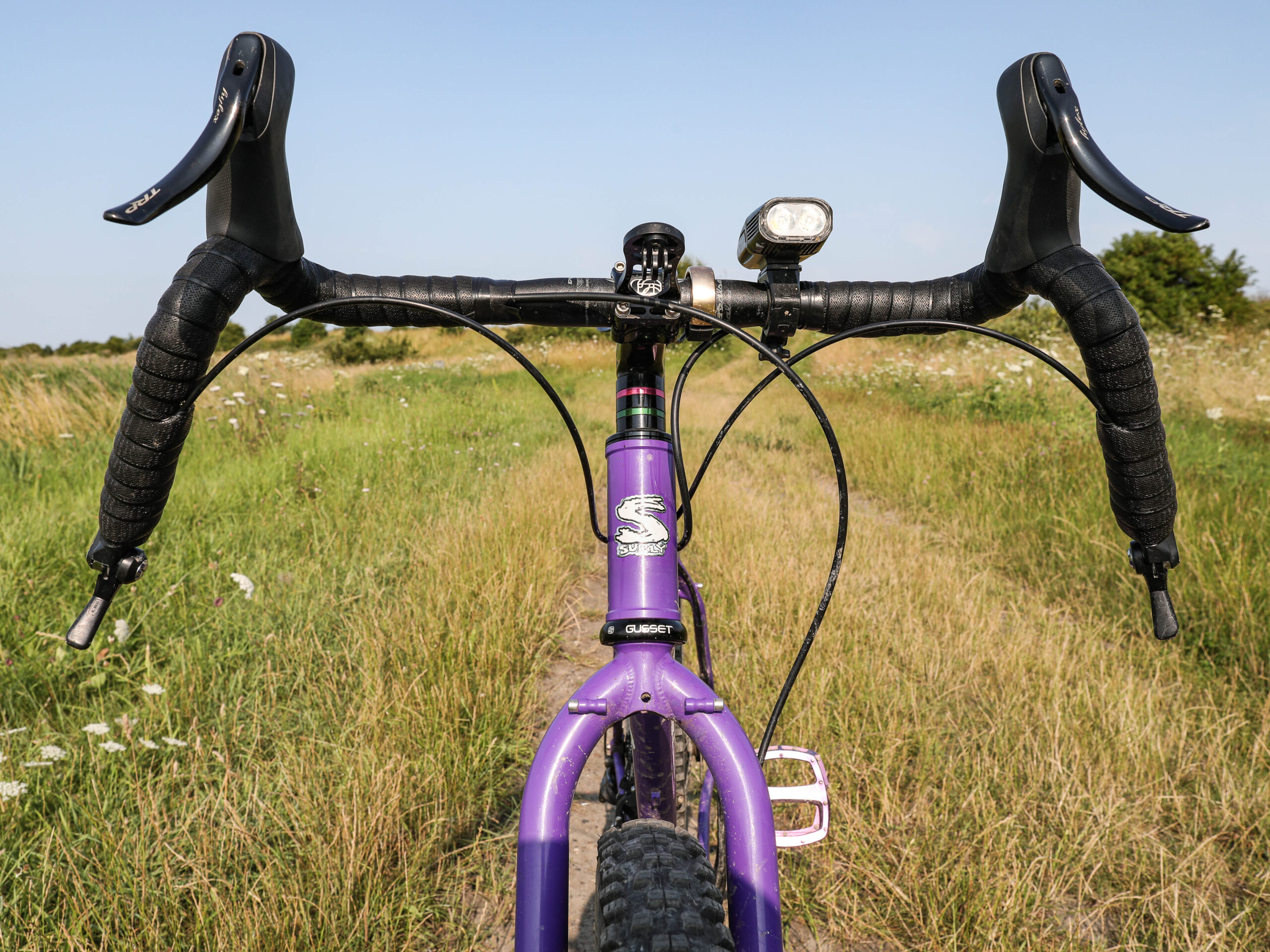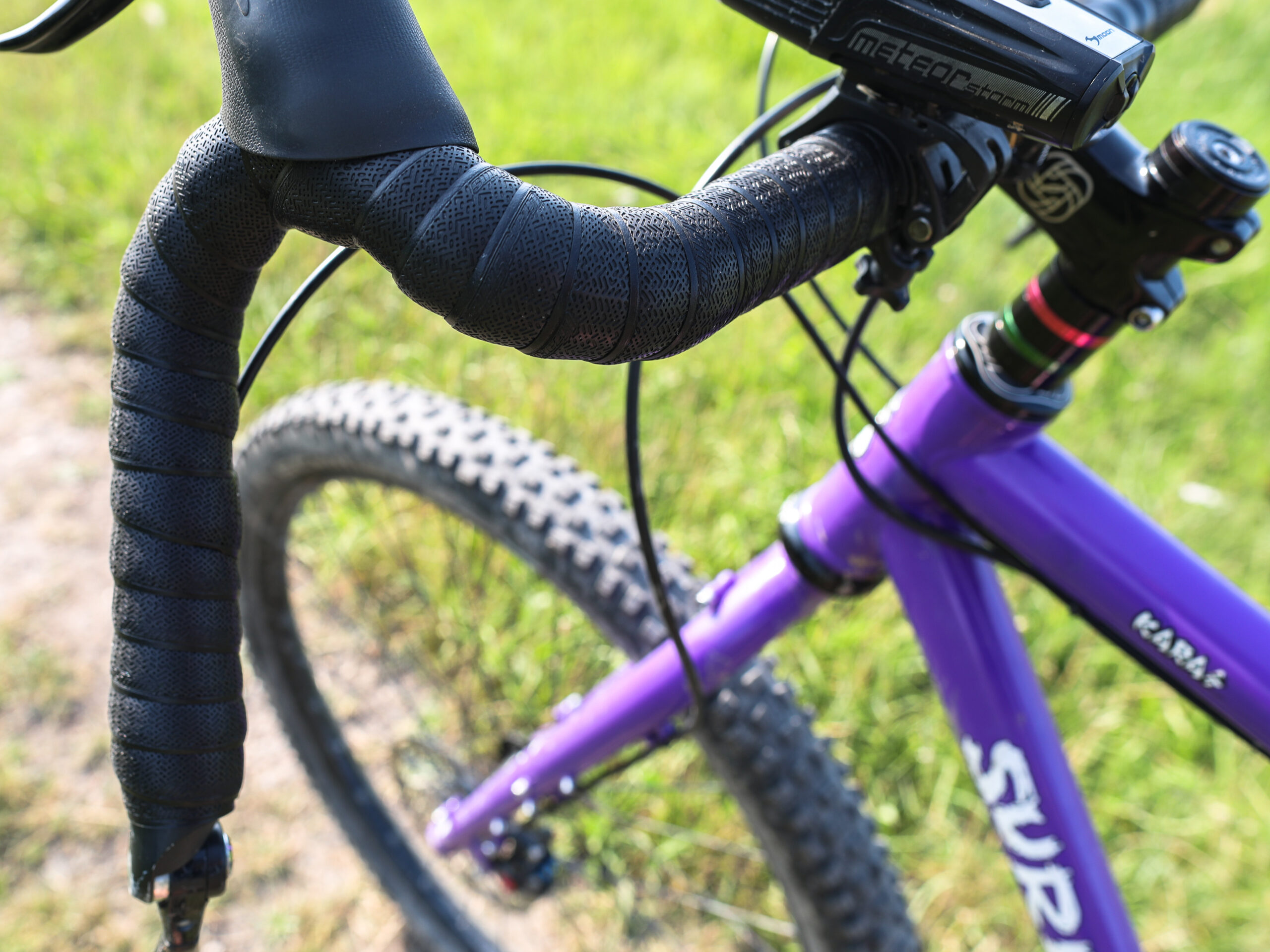Lizard Skins, founded in 1993, has been manufacturing quality cycling accessories for almost three decades. The company initially designed products to protect the bike and rider but has since expanded to gloves and grips. Their continued research and passion meant that in 2008 they created their most innovative grip and flagship product, Durasoft Polymer (DSP). DSP is a polymer-based formula that provides a unique combination of excellent gripping properties and “a softness that can only be appreciated by touch.” As a result, Lizard Skins has had a lasting impact on the world of professional cycling and today sponsors three Pro Tour cycling teams. I’m not a competitive rider, but I do love bicycle touring and bikepacking and have been very keen to get my hands on Lizard Skins DSP Bar Tape to see what all the fuss is about. I opted for the plushest 4.6-millimetre option (but the tape is also available in 1.8-, 2.5-, and 3.2-millimetre choices) and applied it to the Salsa Woodchipper drop bars I run on my Surly Karate Monkey.


The Karate Monkey is my latest bikepacking build and is designed to be my ultimate all-rounder for adventure cycling. However, I stuck with rigid forks (I like the stock Surly forks due to their numerous mounting points), and whilst the 2.35-inch tires do a good job ironing out the bumps, they’re not as forgiving as my Surly ECR’s 3.0-inch knards, which I do miss on the rough stuff. Consequently, I wondered whether Lizard Skins fabled DSP comfort and vibration absorption would help bridge the gap between the two tire sizes. In the end, the bar tape couldn’t have arrived at a better time with my other bikes out of service, a sea kayaking wrist injury, and a bunch of rides lined up.
The first thing to point out is that wrapping the bars is a little trickier with DSP tape, or at least dissimilar from what I’m used to. DSP, unlike generic tape, shouldn’t be stretched (otherwise, you risk breaking the bond between the top DSP layer and the foam base, which can cause it to wear prematurely). I have to say, it’s easier said than done when my instinct was to stretch with every rotation. The key is to keep it under a little tension, work in sets of five-six wraps, gently grabbing and twisting, so they bond to one another, then moving on to the next set. I was fortunate the supplier passed on this information, and it helped. But even then, I had to take my time. I wouldn’t say it’s much harder than generic tape; it’s just different. I’d feel more confident next time round. Tape fitted, it was time to see whether DSP lived up to the hype.

I decided to trial the grip across multiple surfaces, starting with some generic road riding, then moving onto gravel forestry tracks, bumpy singletrack, rutted woodland trails, and culminating with a blast around my local mountain bike park. The first noticeable improvement over generic tape is the enhanced level of grip; the DSP tape almost sticks to the hand, which is excellent for rough, fast trails. The latest DSP Bar Tape V2 features a new pattern, upgraded polymer, and screw-in bar plugs (although I have bar end shifters, so the plugs weren’t required). Lizard Skins states the latest “pattern is more technical with a new design and multiple layers of depth.” I think “technical” is a great overview of this tape; it feels like it wants to be ridden hard and inspires confidence on the limit.
One of the key objectives when fitting this tape was the hope that it would offer enhanced vibration absorption, and this was one of the areas DSP really performed. The 4.6-millimetre option is definitely the one I’d recommend if all-day comfort is your priority. I gave the tape a thorough blast on rutted forestry trails, rough gravel roads, and on multiple trips to the mountain bike park, and I was impressed. The tape is not dissimilar to soft cork underhand and provides brilliant dampening on bumpy terrain. My left wrist was still recovering from tendonitis, so I was particularly susceptible to vibrations, which meant I particularly noticed the additional comfort provided by DSP compared to my old tape.

I’m pleased I finally got the opportunity to field test DSP Bar Tape, as it was genuinely impressive. It is a little fiddly when applying to bars, and you want to distribute as evenly as possible to prevent a lumpy finish, but this is achieved painlessly with a little patience. DSP is a fantastic upgrade to traditional tape and will remain on the Karate Monkey for the foreseeable future.
$52 | lizardskins.com
Our No Compromise Clause: We carefully screen all contributors to make sure they are independent and impartial. We never have and never will accept advertorial, and we do not allow advertising to influence our product or destination reviews.


